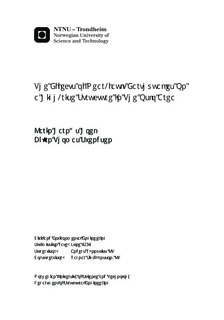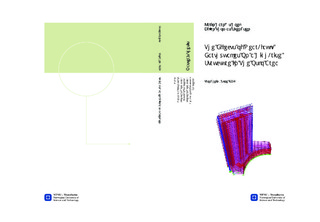| dc.contributor.advisor | Rönnquist, Anders | nb_NO |
| dc.contributor.advisor | Sigbjörnsson, Ragnar | nb_NO |
| dc.contributor.author | Hoel, Karin Harnæs | nb_NO |
| dc.contributor.author | Svendsen, Bjørn Thomas | nb_NO |
| dc.date.accessioned | 2014-12-19T12:00:38Z | |
| dc.date.available | 2014-12-19T12:00:38Z | |
| dc.date.created | 2012-11-08 | nb_NO |
| dc.date.issued | 2012 | nb_NO |
| dc.identifier | 566060 | nb_NO |
| dc.identifier | ntnudaim:7976 | nb_NO |
| dc.identifier.uri | http://hdl.handle.net/11250/236982 | |
| dc.description.abstract | The objective of the presented research is to evaluate the seismic response of a high-rise structure located in a seismic environment. For this purpose, the Oslo Plaza building located in Oslo, Norway, was chosen. A numerical element model of the building was created in the structural analysis program SAP2000 with emphasis on the soil-structure interaction representation. A structural monitoring process with the intention of calibrating the model was performed. The focus was to estimate and evaluate the dynamic behavior and response of the high-rise structure to strong ground motion, with emphasis on near-fault ground motion. For this purpose, simulations and modifications of ground motion data was performed. The seismic response of the structure with emphasis on important damage parameters of special concern for tall structures such as displacement, interstory drift and base shear were investigated. It was found that near-fault earthquakes results in larger seismic response than far-fault earthquakes for the high-rise structure considered. The near-fault ground motion rendered larger interstory drift which was found to be decisive at critical floors, as expected. Analyses of the existing point bearing foundation resulted in less seismic response than an alternative foundation representation modeled in SAP2000. Oslo Plaza was found to perform well considering the response parameters taken into consideration for the different seismic scenarios. A seismic design according to Eurocode 8 and the National Annex of Norway is sufficient for high-rise structures like Oslo Plaza. An exception was found investigating the P-Δ effects. The study does not incorporate design checks of the structure.Keywords: Near-fault Ground Motion; High-rise Structure; Interstory Drift; Soil-structure Interaction; Oslo; Structural Monitoring. | nb_NO |
| dc.language | eng | nb_NO |
| dc.publisher | Institutt for konstruksjonsteknikk | nb_NO |
| dc.subject | ntnudaim:7976 | no_NO |
| dc.subject | MTBYGG Bygg- og miljøteknikk | no_NO |
| dc.subject | Beregningsmekanikk | no_NO |
| dc.title | The Effects of Near-fault Earthquakes On a High-rise Structure In The Oslo Area | nb_NO |
| dc.type | Master thesis | nb_NO |
| dc.source.pagenumber | 174 | nb_NO |
| dc.contributor.department | Norges teknisk-naturvitenskapelige universitet, Fakultet for ingeniørvitenskap og teknologi, Institutt for konstruksjonsteknikk | nb_NO |

